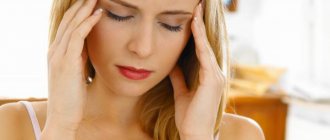The drug treatment strategy for OCD described in this article is based on the British Department of Health's NICE Guidance (https://www.nice.org.uk/Guidance/CG31). This is a standardized protocol derived from the results of several hundred clinical studies. Each point of this protocol is drawn up in accordance with the principles of evidence-based medicine, that is, it is based on a set of scientific facts, and not on the opinions of individual authorities. The treatment algorithm is a sequence of stages - the so-called “line of therapy” - when the next stage is applied only if the previous one is ineffective. It is especially worth noting that before starting pharmacological treatment, all patients are offered to undergo a short course of CBT.
FIRST LINE
The first line of treatment for mild impairment of daily functioning is brief psychotherapy (10 hours) involving exposure and ritual avoidance (ERR).
With moderate severity of OCD and insufficient effect from short-term psychotherapy, the patient is offered either a longer course of cognitive psychotherapy (including exposure) or a course of SSRI antidepressants.
For severe OCD, a combination of cognitive behavioral psychotherapy and an SSRI antidepressant is prescribed.
Notes :
- In the absence of behavioral (physical) rituals, CBT is prescribed with exposure to unpleasant thoughts and prevention of mental compulsions.
- If family members are involved in compulsions, their participation in exposure training is recommended.
- Patients who refuse EPR may be offered specialized purely cognitive psychotherapy.
Clients seeking psychotherapy other than CBT - hypnosis, Gestalt, transactional analysis, couples therapy - should be informed that there is no convincing evidence of the effectiveness of these methods.
It should be noted that for obsessions, the effective dosages of antidepressants are higher than the doses used for depression. This is due to the fact that SSRIs have a special anti-obsessive effect that occurs at maximum or submaximal doses. This is associated with two features of the use of this group of drugs. Firstly, antidepressants have a cumulative effect: that is, their effect develops within 2-4 weeks from the start of use. Secondly, increasing the daily dose - from the initial to the anti-obsessive dose - is done gradually and takes several weeks. In view of this, the desired effect of the drugs usually occurs no earlier than a month from the start of use. Judging by my observations, psychiatrists often do not warn patients about these features of antidepressants, which leads to premature refusal of treatment and the erroneous opinion that this group of drugs is ineffective.
Antidepressants used to treat OCD
| A drug | Trade names | Dosages for depression | Dosages for OCD |
| Sertraline | Zoloft, Stimuloton, Asentra, Serenata, Aleval | 50-150 mg/day | 150-250 mg/day |
| Fluvoxamine | Fevarin | 50-100 mg/day | 150-300 mg/day |
| Escitalopram | Cipralex, Elitseya, Lenuxin, Selectra | 10-20 mg/day | 10-20 mg/day |
| Citalopram | Tsipramil, Citol, Siozam, Oprah | 20-40 mg/day | 40-60 mg/day |
| Fluoxetine | Prozac, Fluoxetine, Lannacher, Apo-Fluoxetine, Deprex, Profluzac | 20-40 mg/day | 40-80 mg/day |
| Paroxetine | Paxil, Rexetine, Adepress, Plizil | 20 mg/day | 40-60 mg/day |
The most common side effects of SSRIs are dizziness, drowsiness, nausea, and increased anxiety in the first weeks of treatment. If the antidepressant is effective, it should be continued for at least 12 months.
Insomnia with VSD
Very often, doctors prescribe Afobazole for insomnia at the time of VSD. This is explained by the fact that the drug is able to eliminate anxiety during VSD. Just a few days of taking Afobazole make a person calmer, and their mental and emotional state improves. Falling asleep becomes easier, and insomnia subsides from Afobazole.
According to reviews from patients taking Afobazol, falling asleep became much easier already on the fifth day of use. I didn’t have to lie there and scroll through anxious thoughts in my head. The patients fell asleep literally a few minutes after going to bed. An undoubted advantage in the treatment of VSD with Afobazole is that people of different professions can use the drug. Afobazole does not relax the body, does not impair attention and concentration, and does not affect memory.
SECOND LINE
If SSRIs are ineffective (and the lack of effect can be stated after at least 8 weeks of taking the drug at the recommended dosage), they proceed to prescribing clomipramine. Clomipramine (Anafranil) at a dose of 75-300 mg per day is the “gold standard” for the treatment of obsessions and has been used for OCD for about 40 years. Its strength of anti-obsessive effect is maximum compared to any other pharmaceuticals, however, side effects are more pronounced (and almost inevitable): dry mouth, constipation, difficulty urinating, rapid heartbeat, disturbance of accommodation. It is in this regard that anafranil is relegated to the second line by more modern antidepressants.
Panic attacks with VSD
One of the symptoms of VSD is panic attacks. This is a very unpleasant symptom. As the sick admit, the manifestation of attacks can be sporadic and not long-lasting. Other people diagnosed with VSD have long-lasting attacks that are both physically and emotionally draining. During panic attacks at the time of VSD, a person experiences anxiety for no apparent reason, a feeling of fear, trembling, a strong heartbeat, and pale skin. In some cases, the symptoms of a panic attack are so severe that they can lead to the patient fainting during VSD and may require medical intervention.
Any panic attack during VSD is a huge stress for the body. It is exhausting, takes away strength, and can start at any moment of the day or night. This reduces the quality of life and prevents a person from living fully with a diagnosis of VSD.
It is clear that what is happening is a critical condition for human health. Therefore, turning to specialists is only the first step in the fight against panic attacks due to VSD. After conducting tests and studies, making a diagnosis, treatment for the diagnosis of VSD will be prescribed to correct the patient’s condition. It will most likely include Afobazole, along with other drugs.
It is worth noting that Afobazol does not treat panic or panic attacks.
The drug is intended to treat VSD, and panic attacks are just one of the symptoms of its manifestation. When taken systematically, the remedy will help get rid not of panic, but of the disease itself, which causes many other unpleasant manifestations in patients. These are dizziness and cardiovascular disorders, gastrointestinal problems and respiratory problems. Doctors insist on systematically taking Afobazole, because a one-time dose of the medicine, especially during a panic attack, is useless. The effect of Afobazole on VSD begins thirty minutes after administration. By this time, any attack attack is either not so intense or has already stopped on its own.
Despite positive reviews from patients who took Afobazol for VSD, doctors do not recommend using the drug on their own.
Source: stopvsd.net
THIRD LINE
If there is no effect or insufficient effect from clomipramine, the following steps are taken:
- Continuation of cognitive behavioral therapy
- Enhancing the effect of an SSRI with another serotonergic drug (trazodone, mirtazapine, L-tryptophan, buspirone) or an antipsychotic (quetiapine, olanzapine)
- Combination of clomipramine and citalopram
At the same time, the British Ministry of Health considers the use of the following drugs unjustified:
- tricyclic antidepressants (except clomipramine)
- Selective serotonin and norepinephrine reuptake inhibitors (SNRIs): Velaxin (venlafaxine), Cymbalta (duloxetine)
- monoamine oxidase inhibitors (MAOIs): aurorix (moclobenide), pyrazidol
- tranquilizers (phenazepam, relanium, clonazepam) - with the exception of a short (no more than 2-3 weeks) course at the beginning of the use of SSRIs to neutralize a possible temporary increase in anxiety
I note that this article is for informational purposes only and is not instructions for self-prescribing medications. I wrote it so that you can check the treatment prescribed to you for compliance with European standards. If your doctor does not adhere to the sequence described above, then I would strongly recommend finding a psychiatrist who adheres to the principles of evidence-based medicine.
First signs and symptoms
Obsessive-compulsive disorder begins with anxiety and fear. Fear of contracting serious somatic or infectious diseases, anxious doubts about the completion of one’s actions and obsessive thoughts entail the development of “protective” rituals as methods of combating anxiety.
For example, a girl is overcome by the fear of becoming infected and becoming a lesbian if she sits on a chair where another girl was sitting. Afraid to touch anything that a woman's skin might touch. This forces her to handle items with gloves and wash them at home.
Or the fear that something might happen to the children forces them to clean the apartment every second and fold towels in the shape of eggs in the kitchen.
If a person with OCD finds himself in uncomfortable conditions, he begins to feel panic and horror, his hands become sticky, and he begins to feel short of breath.
In an attempt to avoid alarming reactions, a person begins to avoid acquaintances and evade events, the circle of phobias expands, and rituals take on increasingly complex forms. The sufferer understands the meaninglessness of his experiences and the actions associated with them, but cannot independently get out of the pathological circle.
The life of a long-term OCD patient is a constant struggle with anxiety through endless cycles of ritual behavior.
Obsessive-compulsive disorder makes it difficult to relax, stop and drink a cup of tea. It forces you to carry out actions until the end until the result is perfect. For example, closing the door four times or washing your hands three times.
It is in the structure of this disorder that numerous types of phobias are presented:
- cardiophobia;
- cancerophobia;
- speedophobia;
- arachnophobia, etc.
Intrusive thoughts can be of various contents, but are interrelated with phobias: fear of contracting a disease or condition, fear of harming oneself or others, sexual images, religious ideas, ideas of symmetry and order.
There are three main forms of the disorder:
- Predominantly obsessive – mainly obsessive thoughts;
- Predominantly compulsive – predominance of rituals;
- Mixed form.
I. Concept of acute, chronic and pathological pain. Pathophysiological and clinical features of chronic pain. The main types of chronic pain syndromes. Neurochemistry of chronic pain.
Typically, acute pain is a symptom of some sudden pathology or tissue damage. Acute pain can be called physiological, since it performs a certain protective function and, signaling the development of pathological processes in tissues, contributes to the development of adaptive complex reactions in the body. Treatment of acute pain is usually aimed at eliminating the cause that caused this pain, or at minimizing its algogenic effect (blockade). Chronic or recurrent pain has a multicomponent origin, which is based not only on pathophysiological, but also on closely interacting psychological and social factors. Chronic pain is also called pathological pain, since it has a pathogenic significance for the body, and, causing dysfunction of the central nervous system, mental and emotional disorders, leads to damage to internal organs. Chronic (pathological) pain is considered an independent disease with a primary pathological process in the somatic sphere and secondary dysfunction of the peripheral and central nervous system. Its main differences are the duration (at least 3 - 6 months), increased patient resistance to the therapy, and the absence of a direct dependence on the identification and elimination of the cause that caused it.
Chronic pain can be of three types:
- Pain resulting from continuous long-term exposure (herniated disc).
- Pain following an acute injury, but lasting well beyond the normal healing period (causalgia, regional pain syndrome, phantom pain).
- Pain without a specific, visible, noticeable cause (muscle tension headaches, migraines).
- Chronic pain is an independent disease, in the pathogenesis of which psycho-emotional and social factors play a leading role. With chronic pain, there may be no direct connection between the pain and the cause that caused it.
- The mechanisms of development of chronic pain and depression involve common mediator systems.
- According to epidemiological studies, there is a strong connection between depression and chronic pain.
There are different classifications of chronic pain. Most of them are based on the localization of the pain syndrome: headaches, neck and back pain, facial pain, pain in the limbs, chest pain, abdominal pain, pain in the pelvic area. There are also pains of somatic origin, neurogenic and psychogenic pain. In the mechanisms of development of chronic pain, regardless of its location and origin, important importance is given to the mediator systems of the brain and spinal cord:
- Serotonergic
- Noradrenergic
- Dopaminergic
- GABAergic
- Peptidergic (opioid and non-opioid).
As a result of numerous clinical and experimental studies, the following has been established:
- Intrathecal administration of serotonin causes analgesia and inhibits the activity of dorsal horn neurons of the spinal cord caused by painful stimulation.
- When serotonin reuptake inhibitors are introduced into certain areas of the brain (the raphe nucleus magnum), which promotes the release of serotonin from synaptic terminals, an analgesic effect develops.
- Selective disruption of descending serotonergic pathways enhances the pain response.
Similar results were obtained when studying the influence of the adrenergic mediator system. It turned out that norepinephrine modulates pain signals both at the suprasegmental and spinal levels. Therefore, adrenergic receptor blockers increase pain sensitivity, and agonists (clonidine) inhibit the activity of nociceptive neurons in response to pain stimulation.
II. Chronic pain and depression.
Numerous clinical and epidemiological studies have established that there is a close connection between chronic pain and depression. Data on the prevalence of depression among patients with chronic pain range from 30 to 87%. Some researchers consider depression to be the leading factor in decreased ability to work in patients with chronic pain, or the most significant motivation when seeking medical help. However, the connection between depressive disorders and chronic pain does not seem clear, and there are various alternative versions of their cause-and-effect relationships:
- Chronic pain is a cause of depression.
- Patients with depression are more likely to experience pain.
- Chronic pain and depression are indirectly linked by other intervening factors (disability).
III. Pharmacotherapy of chronic pain. Adjuvant therapy. Use of antidepressants in the treatment of chronic pain.
In the drug therapy of chronic pain syndromes, two main groups of drugs are used:
- Analgesics (opioid and non-opioid)
- Adjuvant analgesics.
Adjuvant analgesics, or “coanalgesics,” are a heterogeneous group of drugs that provide analgesia either for specific pain syndromes or neutralize the side effects of opioids, allowing them to prolong their analgesic effect. These include drugs that do not have direct analgesic properties, but acquire them under certain circumstances (antihistamines, tranquilizers, anticonvulsants, etc.). Chronic (pathological) pain represents precisely those conditions in which the use of more adjuvant agents leads to a positive effect. Among the latter, a significant place belongs to antidepressants. Unfortunately, in widespread clinical practice, the prescription of antidepressants by doctors is motivated only by the desire to cause a sedative effect and, thereby, create a favorable background for the main therapy (analgesics). Meanwhile, it is known that the use of antidepressants has a positive effect in 50-60% of patients with chronic heart disease. Data from more than 60 clinical trials show the analgesic effect of antidepressants in the treatment of most CHD. Antidepressants are believed to have an analgesic effect through three main mechanisms:
- Reduce depression.
- Potentiate the effect of analgesics or endogenous opiate peptides.
- They have their own analgesic properties, which consist in a long-term prolongation of the synaptic activity of norepinephrine and serotonin.
CBP is a general indication for the use of antidepressants, but some pain syndromes are an obligatory indication for their use. These include neurogenic pain syndromes (diabetic neuropathy, herpetic neuropathy, causalgia, etc.), some types of primary headaches (muscle tension headache, migraine, abuse headache, etc.).
IV. Pharmacotherapy with antidepressants for CHD.
The table shows various groups of antidepressants that differ in their mechanism of action.
In the treatment of CHD, antidepressants are used - inhibitors of neuronal uptake of neurotransmitters: non-selective and selective. The first group includes tricyclics
and
four-cyclic
antidepressants.
1. Tricyclic antidepressants
(amitriptyline, imipramine, clomipramine). Their pharmacological action is to inhibit the reuptake of norepinephrine and serotonin, which leads to the accumulation of these neurotransmitters in the receptor area. The initial dose of tricyclic antidepressants is from 10 to 25 mg in the evening, before bed, followed by an increase in the daily dose by 10-25 mg every 3-7 days to a maximum of 75 mg (migraine, tension headaches) to 150 mg (neuropathic pain ). By the end of the first week, an analgesic effect is possible, at 2-3 weeks a psychotropic effect occurs - mood improves, ability to work increases, and anxious anticipation of pain disappears. Therapy is carried out for several months with gradual withdrawal.
Side effects:
- Cholinergic: dry mouth, blurred vision, constipation, urinary retention, sinus tachycardia, dizziness.
- Histaminergic: drowsiness, weight gain.
- Adrenergic: orthostatic hypotension, cardiotoxicity.
2. Quadruple cyclic antidepressants
(maprotiline-ludiomil, mianserin-lerivone). They have a predominant effect on the noradrenergic transmitter system. There is evidence of the effectiveness of Mianserin (Lerivon) in the treatment of muscle tension headaches. In addition, the drug is convenient when it is necessary to obtain a sedative effect. In our practice, Mianserin was used with good effect for pain in the lower back at a dose of 10 to 30 mg per day. Drugs in this group have minimal side effects, which include drowsiness, weight gain and orthostatic hypotension. Selective serotonin reuptake inhibitors (fluoxetine-Prozac, venflaxine, nefazodone, sertraline-Zoloft, paroxetine-Paxil). The role of selective inhibitors in the treatment of chronic pain is controversial and there are currently few clinical trials demonstrating their effectiveness in neurogenic pain. Fluoxetine (Prozac) is best known for the treatment of headaches: migraines and, especially, chronic tension headaches. Prescribed 1 capsule (20 mg) 1 time per day for 6-8 weeks. A significant effect, according to Russian authors (A.M. Vein, T.G. Voznesenskaya, etc.), was obtained in 65% of patients. It has been proven that fluoxetine causes a statistically significant reduction in the frequency of attacks and their duration. Selective inhibitors have minimal anticholinergic and α-adrenergic blocking activity and thus minimal side effects (nausea, vomiting, anxiety and restlessness, sexual dysfunction, headaches, agitation).
V. Evaluation of the effectiveness of the use of antidepressants in the treatment of chronic heart disease.
According to recent reviews of the use of antidepressants for analgesia (Onghena, Van Houdenhove, 1992) in placebo-controlled studies:
- On average, among the population of patients with chronic heart disease receiving antidepressants, the effect occurs in 74%.
- The magnitude of the analgesic effect when using antidepressants is independent of the predominantly organic or psychological basis of pain.
- The magnitude of the analgesic effect does not depend on the antidepressant activity of the drug, the presence of masked depression, or the use of antidepressants as sedatives. Therefore, antidepressants with a more pronounced sedative effect should be used in patients with sleep disorders to reduce the risk of addiction to hypnotics.
- There is no obvious advantage in choosing selective antidepressants (serotonin or norepinephrine). However, antidepressants with low selectivity in inhibiting monoamine reuptake have a greater analgesic effect.
MAIN TYPES OF CHRONIC PAIN
- Pain resulting from continuous long-term exposure (herniated disc).
- Pain following an acute injury, but lasting well beyond the normal healing period (causalgia, regional pain syndrome, phantom pain).
- Pain without a specific, visible, noticeable cause (muscle tension headaches, migraines).
|
Antidepressants
(thymoanaleptics, thymoleptics)
| A. Monoamine oxidase inhibitors (MAO) A) irreversible MAO inhibitors: Nialamid, Phenelsine |
B. Neuronal uptake inhibitors:
|
| B. Antidepressants of different groups: Cephedrinum, Citalopram, Tryptophan. |
| D. Drugs of other pharmacological groups with antidepressant effects: Ademetionin. |
TRICYCLIC ANTIDEPRESSANTS
| The initial dose is from 10 to 25 mg in the evening, before bed, followed by an increase in the daily dose by 10-25 mg every 3-7 days to a maximum of 75 mg (migraine, tension headaches) to 150 mg (neuropathic pain). By the end of the first week, an analgesic effect is possible; at 2-3 weeks, a psychotropic effect occurs. The duration of treatment is several months with gradual withdrawal. Side effects: 1. Cholinergic: dry mouth, blurred and blurred vision, constipation, urinary retention, sinus tachycardia, dizziness. 2. Histaminergic: drowsiness, weight gain. 3.Adrenergic: orthostatic hypotension, cardiotoxicity. |
Efficacy versus complications of antidepressants (McQuay et al. 1996)
| Chronic pain syndromes | NNT (number needed to treat) NNT - the number of patients who need to be treated to achieve a certain effect) | ||
| Pain reduction (>50%) | Minor side effects | Big side effects | |
| Diabetic neuropathy | 3 | 2,8 | 19,6 |
| Postherpetic neuralgia | 2,3 | 6 | 19,6 |
| Atypical facial pain | 2,8 | — | — |
| Central pain | 1,7 | 2 | — |
| Imipramine | 3,7 | — | — |
| Desipramine | 3,2 | — | — |
| Combination TCAs | 3,2 | — | — |
| Paroxetine | 5 | — | — |
| Fluoxetine | 15,3 | — | — |
| Mianserin | — | — | — |
Alcohol and obsessive-compulsive disorder: the risks of drinking alcohol to combat OCD
People who experience OCD symptoms early in life, such as childhood, are at high risk of developing a substance use disorder in adulthood.
The introduction of alcohol and its consequences can lead to abusing the substance to find temporary relief from your OCD.
Alcohol is addictive. When someone enters a cycle of self-medicating with this substance, it can lead to physical or psychological dependence. Alcohol produces serotonin, a feel-good chemical that causes relaxation and increases self-confidence.
Increased levels of serotonin consistently due to alcohol consumption can cause a chemical imbalance that the body must correct. The body then relies on the presence of alcohol to maintain its newfound chemical balance.
The brain also associates the presence of alcohol with positive feelings about oneself and decreased stress or anxiety. Once this psychological connection is formed, people may want to continue using alcohol to experience the same positive feelings.
Additionally, as people continue to drink, their bodies become accustomed to the volume of alcohol. People then have to consume larger amounts to achieve the desired level of intoxication.










